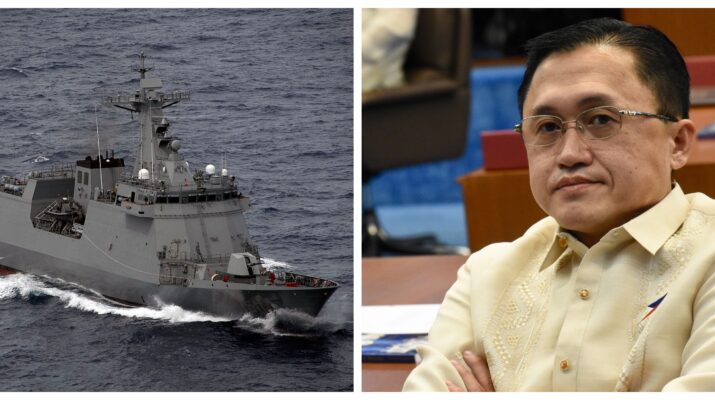For the longest time, the Philippine Navy (PN) relied on World War II-era ships and retired, hand-me-down vessels donated by its foreign allies. To remedy this, the Department of National Defence (DND) got the ball rolling on its Frigate Acquisition Project (FAP) which aimed to acquire brand-new, state-of-the-art warships to bolster the country’s defenses.
It was former President Noynoy Aquino’s defense chief, DND Sec. Voltaire Gazmin, who initiated the project in 2013. Rear Admiral Ronald Joseph Mercado of the PN was also tasked to head the technical working group (TWG) of the FAP, but would later be replaced by fellow Admiral Robert Empedrad in 2014.
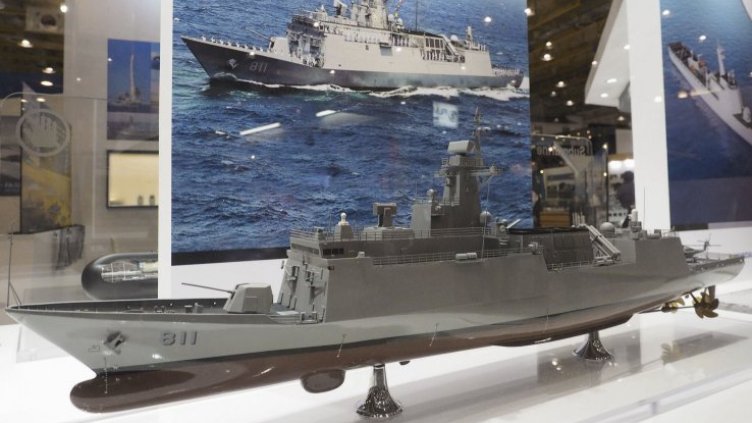
After a period of bidding for the project, South Korea’s Hyundai Heavy Industries (HHI) was selected as the supplier for the country’s newest naval ships in May 2016. Around that same time, Rodrigo Duterte was elected president in that year’s presidential election.
It was under the new Duterte administration that the frigate deal between HHI and the Philippine government was sealed, with the new DND Sec. Delfin Lorenzana signing the contract with the Korean firm. While the exact design of the eventual frigate was confirmed to be HHI’s HF-2600 frigate, the FAP had a second component to it: negotiating the combat management system (CMS) of these new vessels.
The CMS is an integrated system that allows a vessel to control and coordinate its weapons, sensors, and communication equipment during combat operations. Given the CMS determines the ship’s capabilities, determining it is arguably as crucial as selecting the frigate design itself.
The Navy’s preference was the Tacticos CMS of Thales Nederland, a proven product which is used by at least 23 countries worldwide and is compatible with the Tactical Data Link (TDL) 16 standard used by the Philippine Navy. However, Hyundai’s preference was to use the Hanwha Naval Shield CMS – a new and untested system that was also being produced in Korea.
In contrast to Thales’ Tacticos, the Hanwha Naval Shield was only being used by the Korean Navy at the time and was only starting to be exported overseas, with a potential client in the Royal Malaysian Navy during the time the frigate deal was signed. Its integration with the TDL 16 standard was also still being developed and would not be compatible until 2019 – three years after HHI was awarded the contract.
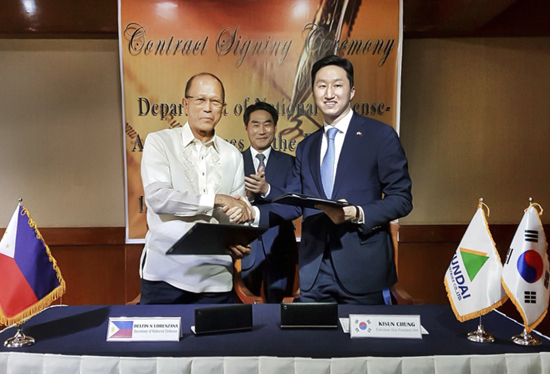
These issues were raised by Rear Admiral Mercado, who at this point was the PN’s Flag Officer-in-Command (FOIC), to Defense Sec. Lorenzana in a letter regarding his concerns on the Hanwha CMS. The PN official also called insertions in the contract with HHI “grossly disadvantageous” to the Navy, specifically the provision giving HHI “the sole right” to choose the manufacturers of the frigate’s equipment.
It was Mercado’s letter to Lorenzana that prompted Hanwha officials to schedule a meeting with Bong Go, who at that time was the Special Assistant to the President (SAP). With the PN adamant on the Thales Tacticos, but the winning supplier HHI insisting on the Hanwha CMS, there was a deadlock in the already overdue FAP program.
The Korean firm allegedly sent a representative to meet with SAP Go in the Philippines in January 2017, to progress the FAP deal while ensuring its Naval Shield CMS would come out on top. A few days after this meeting, Defence Sec. Lorenzana received a white paper endorsing the Hanwha CMS while also assailing the Tacticos CMS of Thales Nederland citing allegations of “poor support and logistics services” from its end users.
Sec. Lorenzana then passed on this two-page document to Rear Admiral Mercado, with a sticky note that read: “Ronald, this was given to me by Bong Go. Go over it and prepare a report/rebuttal to be submitted to the Pres.” The SAP’s office also sent a letter to then Commodore Robert Empedrad, who at this point was the head of the project management team for the frigate project.
“We would like to specifically discuss with you the issue on CMS selection,” said the letter from Go’s office, written on the letterhead of the Office of the President. It was signed by Lloyd Christopher Lao, then an undersecretary in Go’s office.
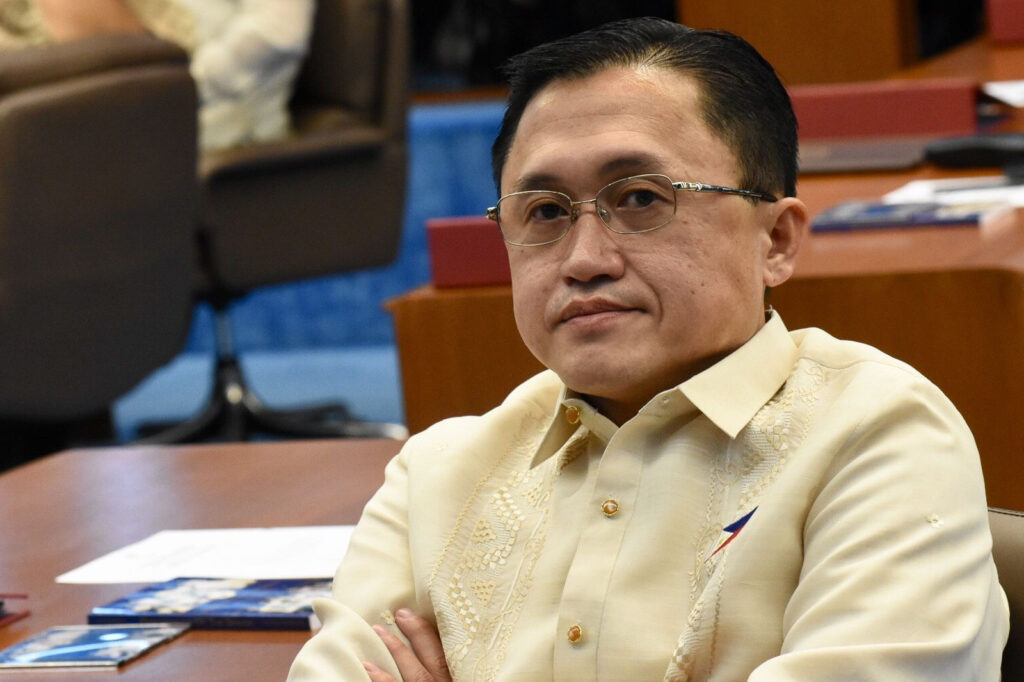
Why a civilian like Bong Go, with no responsibilities pertinent to defense acquisition, would get involved in the FAP deal raised eyebrows. The only thing the Filipino public knew of him at this point was that he is President Duterte’s right-hand man; someone with a direct line to the Chief Executive himself.
For him to send the white paper to the then Defense chief, promoting Hanwha while thrashing Thales Nederland, could easily be seen as a tacit endorsement of one private corporation over another. Naturally, these allegations were vehemently denied by the SAP when they first came out.
In Go’s own words, he denied even knowing about the transaction: “I have not intervened in the procurement of DND of its computer system for its ships. I have not participated nor intervened, directly or indirectly, in the transactions of DND. Further, I even have no information nor knowledge of the said transaction,” the SAP said in a statement sent to the media.
Go’s allies in Malacañang also backed him, insisting that the contract for the FAP was already sealed by the time the Duterte administration took over. But it is crucial to recognize the distinction between the frigate deal itself, which had already been awarded during the Aquino administration, and the deal for the CMS of those frigates – which had not yet been decided and rolled over into the Duterte presidency.
Malacañang’s rebuttal was either naive or deceitful for attempting to conflate the two. Furthermore, by the admission of Lloyd Christopher Lao – Go’s own staffer who invited the PN’s technical working group to discuss the CMS system – it’s clear that negotiations were still ongoing well within the Duterte era.
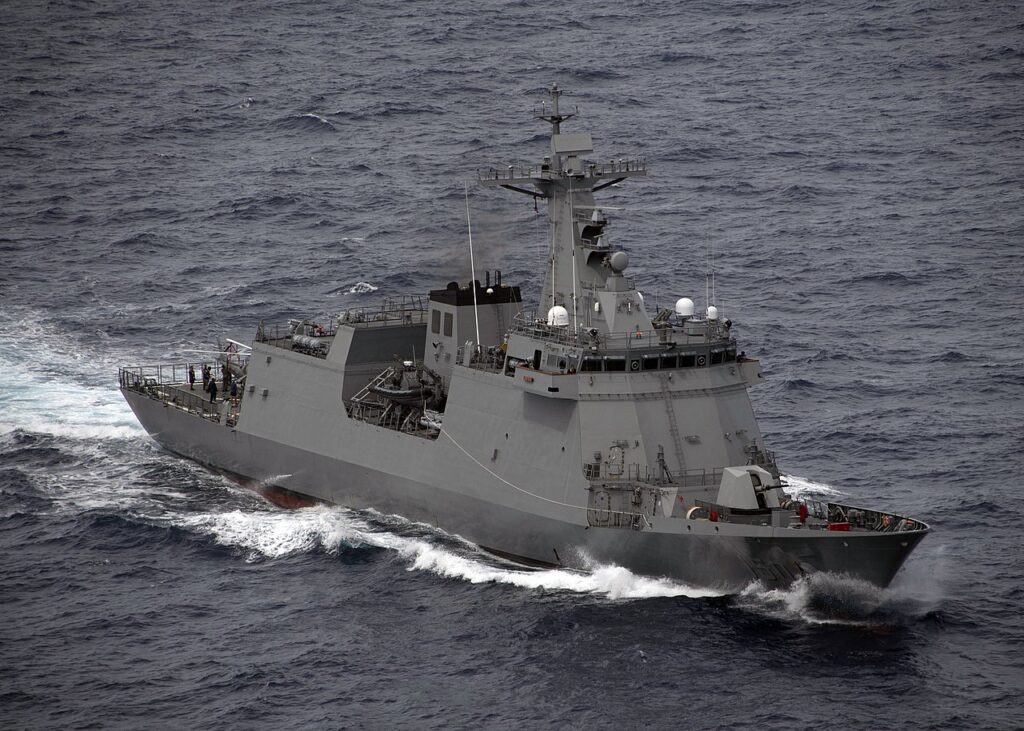
Those facts contradict Go’s statement and even pronouncements by President Duterte himself, who boldly declared that he “will fire” his SAP if it could be proven that the latter did meddle in the FAP. Not only can it be conclusively proven that Go did intervene by promoting Hanwha’s CMS over Thales Nederland’s, the SAP was also exposed to have lied by saying he had no knowledge of the frigate deal at all.
Despite that, Go was neither fired or even castigated by the President for his actions. The Senate opened an investigation into the frigate deal’s various anomalies in 2018, but given it was during the height of the Duterte administration’s power, unsurprisingly nothing materialized out of it.
President Duterte’s term ended in 2022, and while the incumbent Marcos administration began as an ally to the Duterte political dynasty, an ongoing rift between the two families has thrust the pro-Duterte faction – including Bong Go – into the opposition. Without any backing from the rest of government, Go and Duterte are wide open to scrutiny relating to the FAP controversy again.
Former Senator Antonio Trillanes IV, a staunch Duterte critic, has filed a plunder complaint against the former president and Bong Go over the anomalous frigate deal. It is yet to be seen if this new investigation will yield any results, but sans a majority in government and in Congress there should be less obstacles in bringing the culprits to justice this time around.
With escalating tensions in the West Philippine Sea, the need for capable and effective naval vessels to safeguard our maritime borders is more important than ever. If there was a deliberate attempt to undermine that by profiting off our defense procurement, those responsible should be made to pay.

